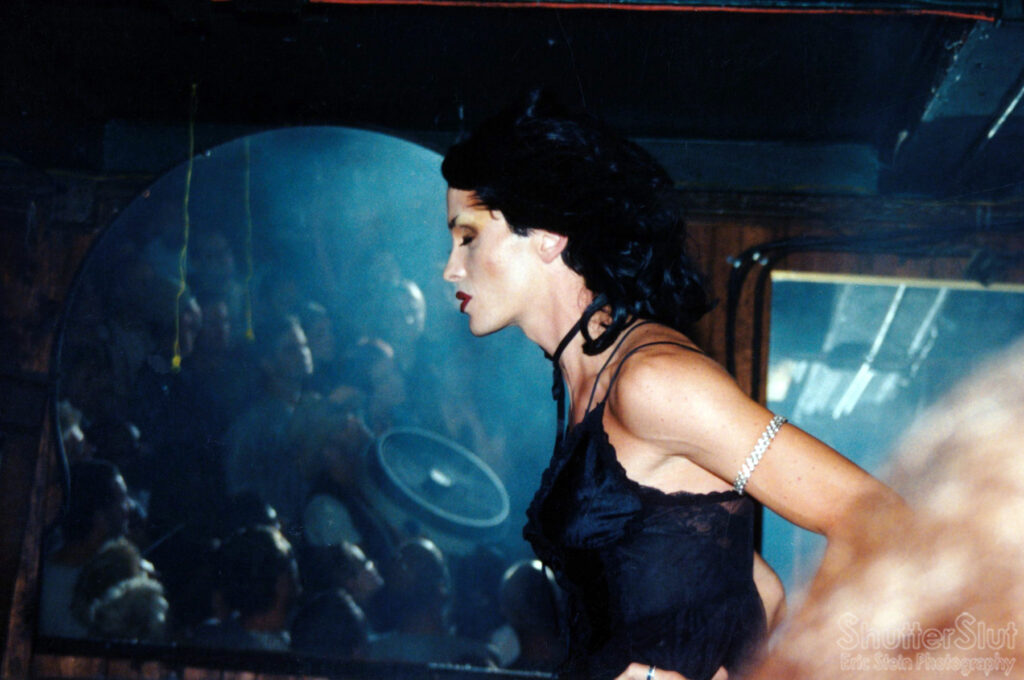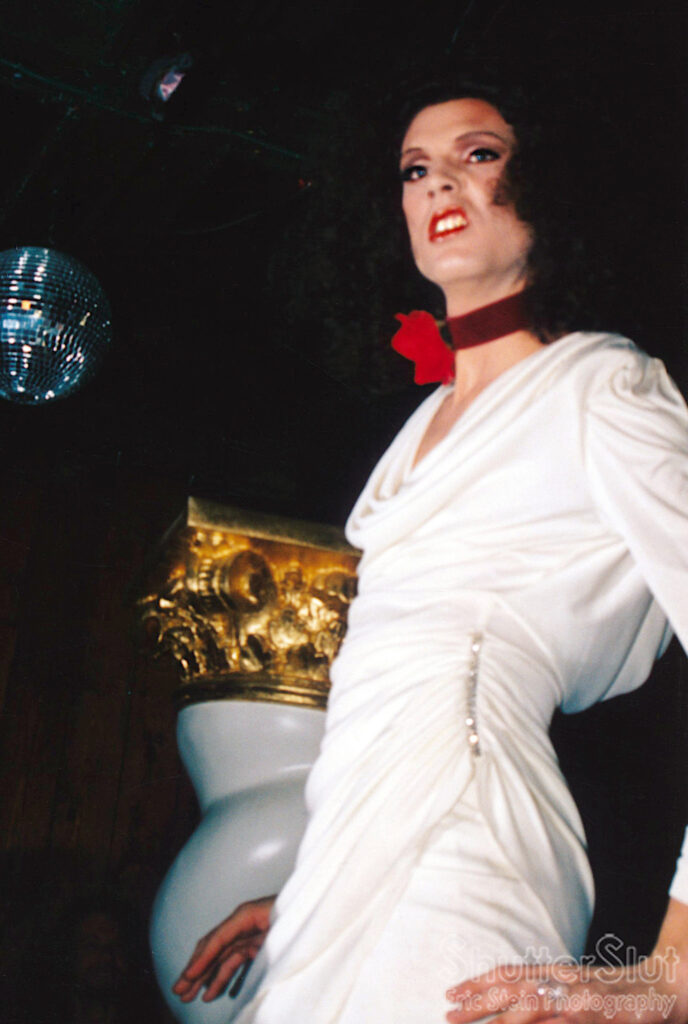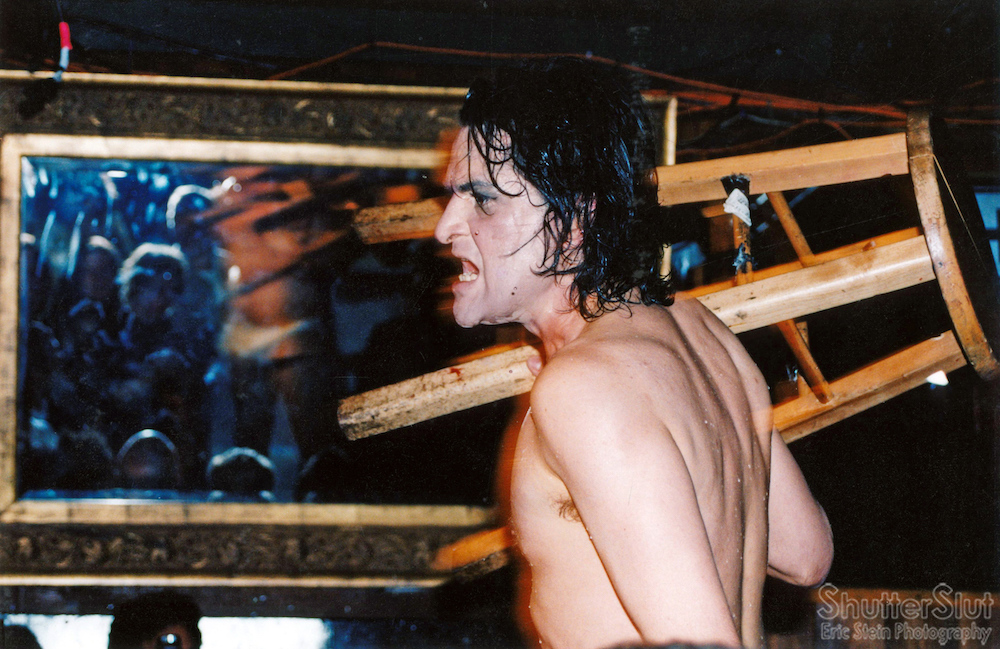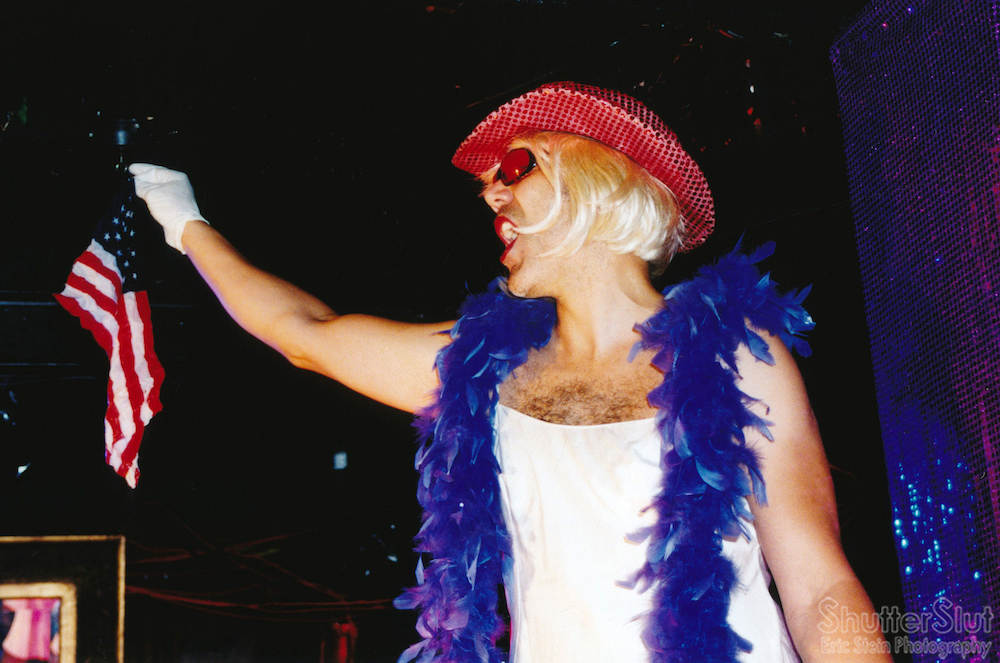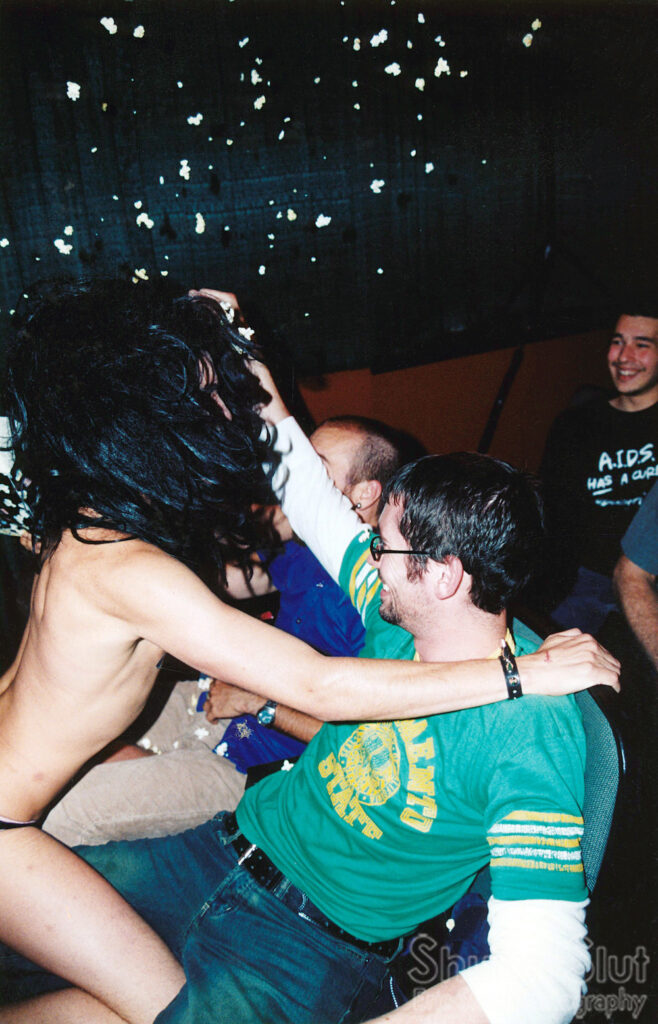“I never wanted to take pictures of people,” local nightlife photography legend Eric “Shutterslut” Stein told me over the phone. “I liked taking pictures of architecture and nature. But then I started going out with my fabulous friends to the clubs, and I was always the plus one. It was frustrating! I came from Phoenix, where everyone knew me, and honey, I never had any trouble walking right through the door.
“So I started taking photos of the door people and the party hosts and the drag queens, and handing them out to them. That got me on the guest list really quick,” he added, his inimitable laugh lighting up my cell.
From the mid-90s to 2018, Shutterslut chronicled the wild scenes at Trannyshack, Bootie, Sugar, Folsom Street Fair, various naughty house parties, underground dance floors—anywhere, really, where wigs flew high and his beloved “freaks” felt free. (Full disclosure: I’m a co-owner of the Stud, where many of Shutterslut’s photos were taken.) Talking to him is like boarding a magic and somewhat unstable carpet ride back through iconic SF moments: Peaches Christ’s Midnight Mass film tributes at the Bridge Theatre and ‘Showgirls’ drag queen lapdances; The Steve Lady stopping time with her indelible performances at the Stud; Juanita More’s Pride parties at the Phoenix Hotel; a Valley of the Dolls lookalike contest at Castro Theatre ….
Above, an exclusive preview of Shutterslut photographs being posted online.
Now, he’s digging into his photography boxes of more than 25,000 prints—yes, he did most of it on actual film—and publishing daily choice glimpses of our recent San Francisco party past on a new Instagram account, RetroQueerSF. It’s a time-traveler’s delight for those of us itching to get back to the club, a check-in with some familiar faces (and many we lost to AIDS and other causes), and a buoyant reminder of how truly weird and wonderful SF nightlife has been, and can be again.
The Insta account, and the photos Shutterslut has been posting for more than two decades at his own website, are also an invaluable record of the queer nightlife moment right before cellphone cameras were ubiquitous and the club scene became a bit, er, overexposed. I know I’m not the only elder denizen who has a big photographic memory hole in his nightlife from the ’90s to the mid-2000s, when you were either struggling to wind up your dinky disposable or checking the batteries in your early digital Canon Powershot (and forgetting to download later). Our party memories literally come in a blurry wash of flashes.
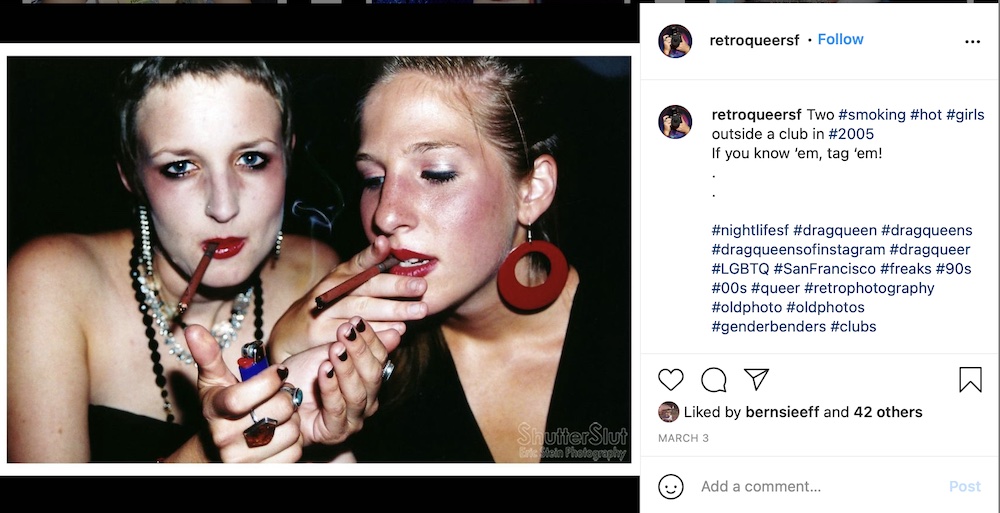
“Back then it was really just me and another photographer Miss Linda lugging these big cameras around to these clubs.” Shutterslut said. “This is way pre-digital, pre-Facebook, pre-social media. MySpace wasn’t even a thing. I started with Pentax, then moved Olympus OM-4, then into the Nikons—these were steel-bodied, heavy pieces of equipment. It was basically another appendage. A Nikon N50 was my last film camera before switching to digital in 2006. It was time to keep up with the kids.”
Shutterslut claims a unique spot in the legacy of local queer nightlife photographers like Polly Polaroid, Melissa Hawkins, Rick Gerharter, Danny Nicoletta, Marc Geller, Rink, Efren Ramirez, Stephen Underhill, and more, stretching from the early days of gay liberation to contemporary practitioners (as much as is COVID-possible) like Gooch and Shot in the City. It’s an undersung yet invaluable history that documented the evolution of queer expression when many people were just starting to feel confident to show their faces in public. Nightlife photos from the past 50 years, especially pre-digital, act as windows into the places where contemporary queer identity was forged, before it exploded into the mainstream media.
Help us save local journalism!
Every tax-deductible donation helps us grow to cover the issues that mean the most to our community. Become a 48 Hills Hero and support the only daily progressive news source in the Bay Area.
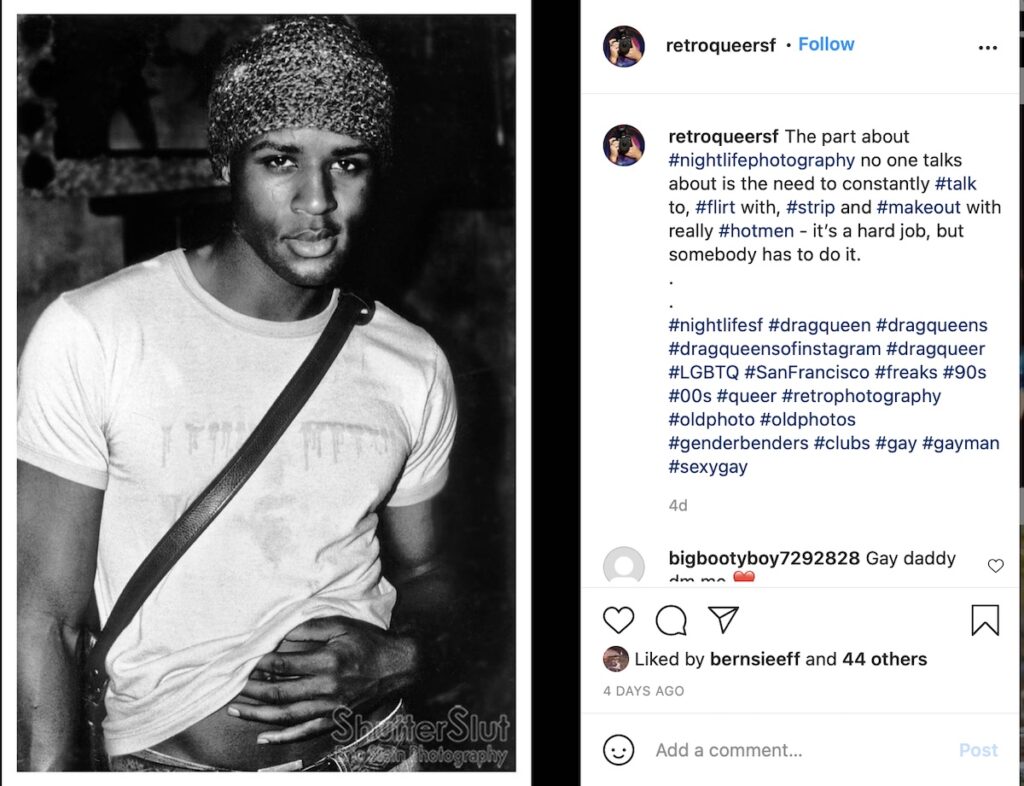
“I had absolutely no background or training in photography,” Shutterslut told me. “It was all instinct and determination. I bought a Pentax K1000 because it looked cool. I never took a class, and it’s not like you could watch a YouTube video. Anytime I saw another photographer’s work that I liked, I tried to figure out what they did. I know I did everything wrong, but it worked. One time at the Reform Skool party, some douche asked, ‘How do you get such rich colors?’ I told him I used Fuji 100 film and he screamed. ‘You can’t use that for dark interiors! It doesn’t work!’ Well, it did.”
Up until recently, Shutterslut was the house photographer for the Bootie mashup party at DNA Lounge. It took the COVID shutdown for him to finally confront the fact that he had zillions of photos waiting to be scanned and cleaned up for digital presentation, bringing this era back to life. “Friends would come over my house and I would pull out a box and they would just be astonished. Like, you have all this history sitting under your bed!” Funding from some of those friends, including a huge donation from former Stud bartender Brian Feagins, kicked his scanning project into gear.

“Of course I kick myself now for not organizing my prints better,” said Shutterslut. (The nickname, by the way, was bestowed upon him by a Renaissance Faire friend who called him a “photo whore,” and echoes a Siouxsie and the Banshees lyric.) “But I never did this for money or posterity. It’s just something I’m driven to do. That’s part of why I keep the 4×6 proof size format when I upload, with a border. Nobody does photos in 4×6. But it keeps it authentic, and with the limitations and uniformity of digital platforms it ensures you’ll see my whole framing.”
The drive to immortalize San Francisco nightlife is also personal. “I was part of the scene, too. I would dress up and sometimes perform. I was infamous for my suits and ties. I wasn’t just taking selfies with the artists to prove I was there. I was taking photos of the artists, of this scene I loved. The performers, the hot boys, the freaks, the queers, the trans women and men. The focus was on them, and this tremendous energy that was in the air.
“It’s hard to explain to anyone who wasn’t there,” he said. “So maybe I can show them.”
